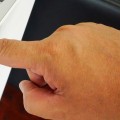As we all socially distance and stay at home amid the COVID-19 pandemic, some may wonder what else they can do to “flatten the curve”. While hand washing and staying at home remain the most effective means of limiting the spread of the virus, conflicting information is emerging about the role and effectiveness of air filters. Can building air filtration protect us from contracting COVID-19? Minimum Efficiency Report, or MERV, values report a filter's ability to capture particulate matter. Filters with MERV-13 ratings or higher can trap smaller particles, including viruses.
Many home HVAC systems will have a MERV-8 filter installed by default. Leakage in building heating, ventilation and air conditioning (HVAC) systems may be part of a general risk mitigation approach, but it is generally not considered a solution on its own. There is no direct scientific evidence of benefit, but reduced exposure can reasonably be inferred based on the ability of some filters to remove particles containing a SARS-CoV-2 virus. For filters to have any impact on the transmission of infectious diseases, transmission must occur through the air route, filters must be properly installed and maintained in systems suitable for treating recirculated air, and filters must be designed appropriately for the building in which they are used.
More importantly, in most buildings and in most situations, filters can be significantly less effective than other infection control measures, such as social distancing, isolation of known cases, and hand washing. Hospitals (and many health centers) have specially designed mechanical systems that can adapt to the levels of filtration they need. They are often based on other control systems and strategies (e.g. Most importantly, they have dedicated staff who operate and maintain this equipment to provide maximum benefit. None of these technologies have been shown to reduce infection in real buildings, even if they are promising based on tests conducted in a laboratory or in an idealized environment.
Some of them have substantial concerns about secondary issues (such as ozone production). Yes, most public health guidelines suggest that transmission of COVID-19 is predominantly associated with large droplets. This is why air filtration is only a small part of a solution, since it generally does not address transmission by contact with the surface or by close contact between people. However, the distinction between droplets and in the air is the size of the particles.
We know that (a) droplets can remain in the air for long periods of time (for example,. In addition, DNA and RNA from other viruses, which are generally associated with droplets, have been found in the filters used. In general, it is prudent to assume that filters have microbiological active material on them. It is not known if this represents a significant risk of infectious disease from viruses, but the precautionary principle would suggest that care should be taken. This becomes particularly important in any building (including a home) where there are known or probable cases of an infectious disease, including COVID-19, and it also extends to portable air purifier filters and vehicle cabin air filters.
Filters should be replaced with the system turned off, with gloves, with respiratory protection if available, outdoors if possible and discarded in a sealed bag. If chemical disinfectants are used, they should only be applied with the HVAC system turned off. In addition, disinfectants should not be applied to ventilation filters before continuing to use the filters within ventilation systems. The effects of disinfectants on filter performance are unknown. Filters should only be treated with disinfectants if they are to be removed from service and disposed of. While UV systems are quite effective at maintaining the cleanliness of HVAC coils, drain pans, and other damp surfaces, properly designed systems can be quite effective in inactivating microorganisms in moving air streams on the fly.
These systems generally require more lamps, so they can provide significant UV doses in a short period of time. A typical one-pass inactivation efficiency is 85%, just like a good particulate filter, but systems can also be designed for inactivation greater than 99.9%.In addition, a well-designed UV air disinfection system within an HVAC system, and located adjacent to the cooling coils, can also provide the surface disinfection benefits mentioned above. Another way to install UV is in a “top air” configuration. Specially designed wall-mounted fixtures create an irradiated area above the occupant and disinfect the air in the space, as the air circulates naturally, mechanically or through the HVAC system.
CDC has approved this type of system for use in tuberculosis control for nearly 20 years, and there is guidance from NIOSH on how to design them. Finally, mobile UV systems are frequently used for terminal cleaning and surface disinfection in healthcare facilities and other spaces. Systems such as these are commonly used in unoccupied spaces due to occupant exposure concerns. The three types of systems can be relevant, depending on the type of building and the individual spaces within the building. The design and sizing of effective ultraviolet systems requires careful consideration. In conclusion, while MERV 8 filters may help reduce exposure to airborne particles containing SARS-CoV-2 virus particles when properly installed and maintained within an HVAC system suitable for treating recirculated air; they should not be considered as a stand-alone solution for preventing COVID-19 transmission.
Other infection control measures such as social distancing and hand washing remain more effective means for limiting its spread.



